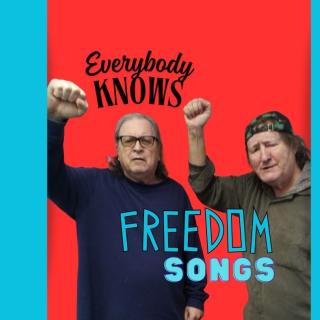In 2004, the transplanted Nashville act Old Crow Medicine Show came into the public consciousness with their massive hit, “Wagon Wheel.” Unlike standard millennial country acts, OCMS was an all-string ensemble of double bass, banjo, fiddle, guitar, and something called a gitjo (presumably a distant cousin to Bertie Wooster’s banjolele). They billed themselves as an “old time string band.”
In the wake of “Wagon Wheel,” old time string band acts have sprung up like daisies. It’s to the point that upstanding American youth are forsaking their Stratocasters and developing a lyrical obsession with geography, particularly mountains and bodies of water. Indeed, geographical terms frequently work their way into the names of these acts -- Yonder Mountain String Band, the Lost Bayou String Band, and the On Pearl Alley Right Behind Long’s Bookstore String Band. Like goddamn Mapquest with fiddles, really.
These days you can’t toss a fingerpick in Columbus town without hitting a mandolin virtuoso. Some of the acts are pretty good – the Hocking River String Band in particular has this thing down to a science and is a hell of a good time. Others not so much. All will strongly deny ever having heard of “Wagon Wheel,” or even OCMS for that matter.
A particularly insufferable subset of local string bands has succumbed to the fad for playing around a single condenser microphone, adjusting relative volume by proximity. That is, whoever is taking a singing or instrumental lead steps close to the central microphone. The apparent reasoning for this is that it transmits the music in its “pure” form, exactly how you would have heard it on Uncle Jesse’s porch in 1905. Pure indeed – I fondly remember those rustic days in Kentucky when Uncle Jesse blasted us kids with feedback, drove sound engineers to homicide and delayed proceedings for 45 minutes while screwing around with this ridiculous setup. Good times.
It might surprise you to hear that string bands in Country music are actually far more recent than the invention of that poor abused microphone. This is because many string banders claim, or at least strongly imply, that their ensemble is part of the ancient folk music tradition. It was string bands composed of stalwart Appalachianites, the story goes, that protected the old songs. They spread them to the hills of Tennessee, sent them west along the Oregon Trail and drove them into heart of America’s secret history.
Yeah well, not exactly. The true story of string bands is considerable different, although no less interesting. String bands actually came into being in the late 1800’s and early 1900’s when instruments such as guitar and double bass were added to the to the then-prevailing fiddle/banjo dance combo now referred to as “Old-Time” music.” Old-Time combos did folk, they did square dances, they did Stephen Foster, they did Tin Pan Alley. Before the turn of the century, fiddle/banjo was the instrumentation of the day for those disinclined to haul a piano around.
Upright bass was being added to the banjo/fiddle combo in African-American dance-houses as early as the 1870’s. Soon string bands were being used in pop, blues and even jazz. Although the term “string band” is generically a reference to an all-stringed instrument ensemble, drums and woodwinds were sometimes used, including in traditional Philadelphia Mummer string bands (look up Mummers online, trust me it’s something to see). String bands were the pop orchestra of their time until the dawn of the big bands.
To be clear, string bands came after the banjo/fiddle combo that was the basis of “Old-Time” music. The phrase “old-time string band,” therefore, doesn’t make any sense. These are different types of ensembles from different eras. It would be like saying “big band rock ‘n roll.”
The true ancestor of the modern string band appeared in the early 1930s. At that time, the Grand Ole Opry radio show was transitioning away from its barn dance origins in search of something more commercially viable (the first Opry performer, confederate war veteran M.J. Bonner, played an hour and a half of fiddle tunes accompanied by, of all things, a Hawaiian band). It started hiring professionals, which meant hiring string bands.
Country music was, unsurprisingly, a patronizing fraud from day one. Opry founder George D. Hay dressed his string bands up in overalls, blacked out their teeth and gave them “country” names like the Possum Hunters, Gully Jumpers and Dixie Clodhoppers. Never mind the fact that the members of the Clodhoppers were jewelry repairmen in downtown Nashville, or that Minnie Pearl graduated from Belmont with a degree in theatre. Then, as now, it was city boys dressed as country boys fleecing the rubes.
As time went on, performers such as Roy Acuff became a new type of animal, the “Opry Star.” Country string bands were now fronted by (relatively) slick singers, who jabbered about mama and ruined old folk songs. Far from preserving folk traditions, country string bands probably did more than anyone else to neuter it. The stark, unflinching songs of Dock Boggs and others were bowdlerized into vapid pleasantries, lumped in with pseudo religious ballads and other cloying trash -- hell, they even wimped up the Carter Family. A great example is Acuff’s Wabash Cannonball, in which a song about a hobo ghost train is transformed into some sort of ode to well-maintained transportation.
Things got more interesting in the 50’s, when Bill Monroe took string band country up to warp speed and created Bluegrass. His banjo player, Earl Scruggs, pioneered the three-finger styled banjo, which has now largely replaced the earlier claw-hammer method. Old folk tunes continued to turn up in family friendly format, although from time to time jail was referenced.
Nobody got murdered and left to decompose in the world of Monroe and the Stanley Brothers, but at that tempo it didn’t much matter.
Although it is a near-contemporary of Elvis Presley’s stint at Sun Records, Bluegrass has come to be viewed as ancient music To be ancient, though, it had to die, and so it did. People have even forgotten its distinguishing feature – speed. While certainly asserting a claim to Bluegrass, modern string bands don’t go as fast as Monroe. In fairness, nobody ever really has – check out Scruggs on “Roll in My Sweet Baby’s Arms.” Maybe Eddie Van Halen on a good day. Maybe.
As bluegrass branched off, Hank Williams’ blues and western swing ended the reign of string bands in Country music. After the magnificent Williams, Country music became the mismash of various styles with pedal steel and an idiot it has been ever since. These days, string bands really are going strong in the hills of southeastern Ohio (well, Athens anyway). The world takes some strange turns.



